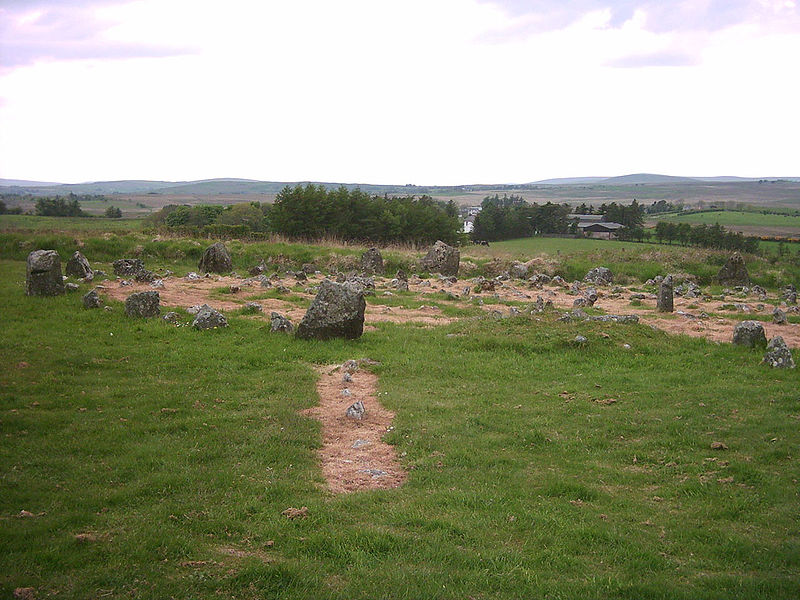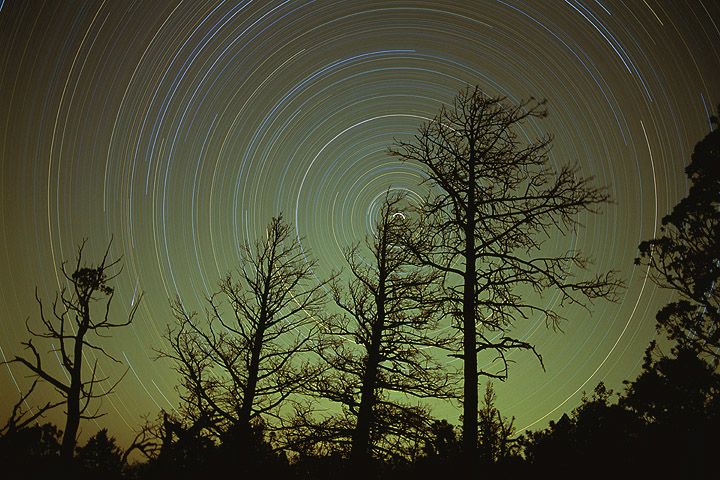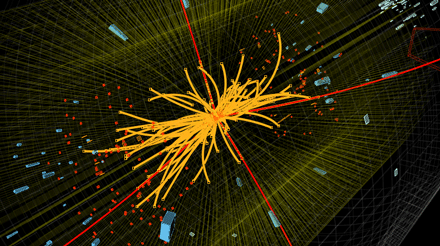 If the stars were a musical instrument, how would they sound? As the Earth spins on its axis, and day becomes night becomes day, our view on the near universe changes as reflected by the changing positions of the stars in the sky. One star appears to stay stationary (the North Star); and the rest take about 23 hours 56 minutes and 4 seconds to complete one complete revolution. Robert Jarvis’ aroundNorth is an eight-channel sound installation created entirely in Kyma 7 that offers listeners an opportunity to hear this phenomenon in real time. As each star crosses one of the equally spaced virtual lines emanating from Celestial North Pole, a sound associated with that star and its characteristics is heard at the corresponding position in the sky, its size, its distance from Earth, its brightness and its temperature, creating a mesmerizing sound map of the universe as viewed by our turning planet.
If the stars were a musical instrument, how would they sound? As the Earth spins on its axis, and day becomes night becomes day, our view on the near universe changes as reflected by the changing positions of the stars in the sky. One star appears to stay stationary (the North Star); and the rest take about 23 hours 56 minutes and 4 seconds to complete one complete revolution. Robert Jarvis’ aroundNorth is an eight-channel sound installation created entirely in Kyma 7 that offers listeners an opportunity to hear this phenomenon in real time. As each star crosses one of the equally spaced virtual lines emanating from Celestial North Pole, a sound associated with that star and its characteristics is heard at the corresponding position in the sky, its size, its distance from Earth, its brightness and its temperature, creating a mesmerizing sound map of the universe as viewed by our turning planet.
aroundNorth, will be touring Northern Ireland throughout the month of March 2015, culminating in the work’s permanent installation at Armagh Observatory. The tour begins on the shores of Lough Neagh, at Oxford Island, the first Dark Sky site in Northern Ireland, proceed to the top of Divis & the Black Mountain National Trust Park, and then on to Armagh. The installation will also travel to Colin Allotments in West Belfast before travelling to Derry for a special performance to coincide with the deep partial eclipse of the sun on the morning of Friday 20th March 2015. There will then be an evening performance in the sports grounds at St Cecila’s College before the final event at the spectacular Beaghmore Stones complex, near Cookstown in County Tyrone.
By mapping the parameters of the stars through the medium of sound, aroundNorth changes the way we think about our stellar neighbors. As stars move across the score’s virtual lines, brighter stars sound longer, fading in and fading out as they move across the score’s virtual lines, while fainter stars sound shorter; stars that are closer sound louder; hotter stars crackle corresponding to their heat; and, bigger stars sound deeper whilst smaller stars are higher sounding.
aroundNorth humanizes the astronomical, giving us an emotional key to help us relate the unfathomable heavens to our own experiences of time and space. With echoes of a Neolithic monument of ancient myth, the installation introduces us to a universe full of interest, encouraging us to think differently about the cosmos and our place within it.
Scroll down for a full schedule of when and where you can experience aroundNorth this month.

THU 12
Lough Neagh Discovery Centre, Oxford Island, Craigavon BT66 6NJ
FREE 7pm – 9pm
SAT 14
Divis & the Black Mountain, Divis Road, Hannahstown BT17 0NG
FREE 6.30pm – 9pm (Approx 20 minute walk to installation area)
TUE 17
Armagh Observatory, College Hill, Armagh BT61 9DG
FREE 2.30pm – 4pm
WED 18
Colin Allotments, Upper Colin Glen Rd, Belfast BT17 0LR
FREE 7pm – 9pm
THU 19
Armagh Observatory, College Hill, Armagh BT61 9DG
FREE 2.30pm – 4pm
FRI 20
St Cecilia’s College Sports Ground, Fanad Drive, Derry BT48 9QE
FREE 7pm – 9pm
SAT 21
Beaghmore Stones, Blackrock Road, Cookstown BT80 9PB
FREE 6pm – 9pm (Visitors required to walk over rough ground)
MON 23 & EVERY MON, TUE, WED, THU & FRI until further notice
Armagh Observatory, College Hill, Armagh BT61 9DG
FREE 9.30am – 5pm

